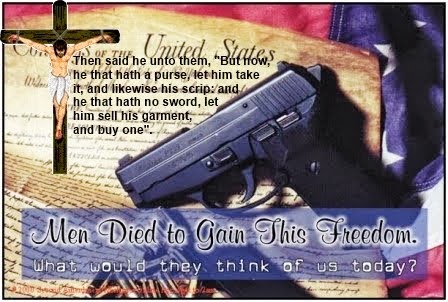[The Bemidji Daily Pioneer, Bemidji, Minnesota, Wednesday Evening, October 26, 1910. Volume 8 Number 203. Pg. 1]
Now let's take a look at what happened after this registration scheme, shall we? The following is an excerpt from an article by Stanislav Mishin titled "Americans Never Give Up Your Guns". The Jan. 2, 2013 article was posted on EconomicPolicyJournal.com:
This will probably come as a total shock to most of my Western readers, but at one point, Russia was one of the most heavily armed societies on earth. This was, of course, when we were free under the Tsar. Weapons, from swords and spears to pistols, rifles and shotguns were everywhere, common items. People carried them concealed, they carried them holstered. Fighting knives were a prominent part of many traditional attires and those little tubes criss crossing on the costumes of Cossacks and various Caucasian peoples? Well those are bullet holders for rifles.And here's what happened after the people of Russia were disarmed:
Various armies, such as the Poles, during the Смута (Times of Troubles), or Napoleon, or the Germans even as the Tsarist state collapsed under the weight of WW1 and Wall Street monies, found that holding Russian lands was much much harder than taking them and taking was no easy walk in the park but a blood bath all its own. In holding, one faced an extremely well armed and aggressive population Hell bent on exterminating or driving out the aggressor.
This well armed population was what allowed the various White factions to rise up, no matter how disorganized politically and militarily they were in 1918 and wage a savage civil war against the Reds. It should be noted that many of these armies were armed peasants, villagers, farmers and merchants, protecting their own. If it had not been for Washington's clandestine support of and for the Reds, history would have gone quite differently.
Moscow fell, for example, not from a lack of weapons to defend it, but from the lieing guile of the Reds. Ten thousand Reds took Moscow and were opposed only by some few hundreds of officer cadets and their instructors. Even then the battle was fierce and losses high. However, in the city alone, at that time, lived over 30,000 military officers (both active and retired), all with their own issued weapons and ammunition, plus tens of thousands of other citizens who were armed. The Soviets promised to leave them all alone if they did not intervene. They did not and for that were asked afterwards to come register themselves and their weapons: where they were promptly shot....
As the authors note, the Bolsheviks were a minority of Communists in a vast and disparate nation where Communists themselves were a tiny minority. It should not be surprising that the Bolsheviks worked hard to ensure that any person potentially hostile to them did not possess arms. [12]Don't know about you, but I'm not giving my guns up unless it's by expended bullets first....
The first Soviet gun controls were imposed during the Russian Civil War, as Czarists, Western troops, and national independence movements battled the central Red regime. Firearm registration was introduced on April 1, 1918. [13] On August 30, Fanny Kaplan supposedly wounded Lenin during an assassination attempt; the attempted assassination spurred a nationwide reign of terror. [14] In October 1918, the Council of People's Commissars (the government) ordered the surrender of all firearms, ammunition, and sabres. [15] As has been the case in almost every nation where firearms registration has been introduced, registration proved a prelude to confiscation. Exempt from the confiscation order, however, were members of the Communist Party. [16] A 1920 decree imposed a mandatory minimum penalty of six months in prison for (non-Communist) possession of a firearm, even where there was no criminal intent. [17]
After the Red victory in the Civil War, the firearms laws were consolidated in a Criminal Code, which provided that unauthorized possession of a firearm would be punishable by hard labor. [18] A 1925 law made unauthorized possession of a firearm punishable by three months of hard labor, plus a fine of 300 rubles (equal to about four months' wages for a highly-paid construction worker). [19]
Stalin apparently found little need to change the weapons control structure he had inherited. His only contributions were a 1935 law making illegal carrying of a knife punishable by five years in prison and a decree of that same year extending "all penalties, including death, down to twelve-year-old children." [20]
This chapter of Lethal Laws summarizes the genocide perpetrated by Stalin from 1929 to 1953, starting with his efforts to collectivize farming by destroying the class of property-owning farmers. Altogether, about twenty million people were murdered, worked to death in slave labor camps, or deliberately starved to death by Stalin's government. From 1929 to 1939, Stalin killed about ten million people, more than all the people who died during the entirety of World War I. Stalin's successful campaign of genocide against the Kulaks and against dissident Communists served as a model for similar campaigns in China and Cambodia. [21]


No comments:
Post a Comment